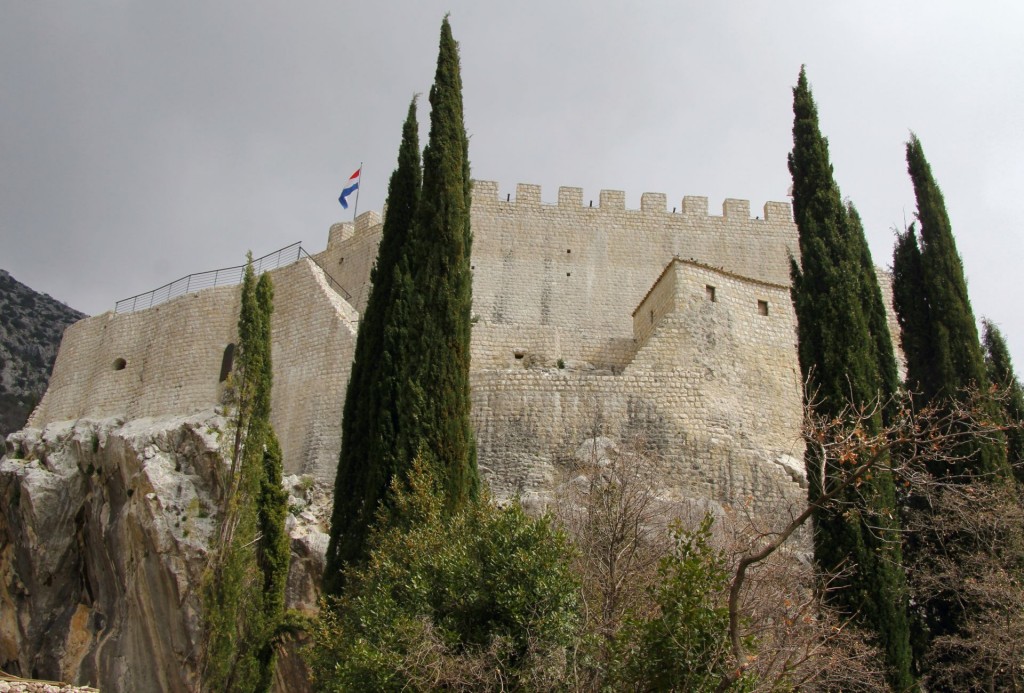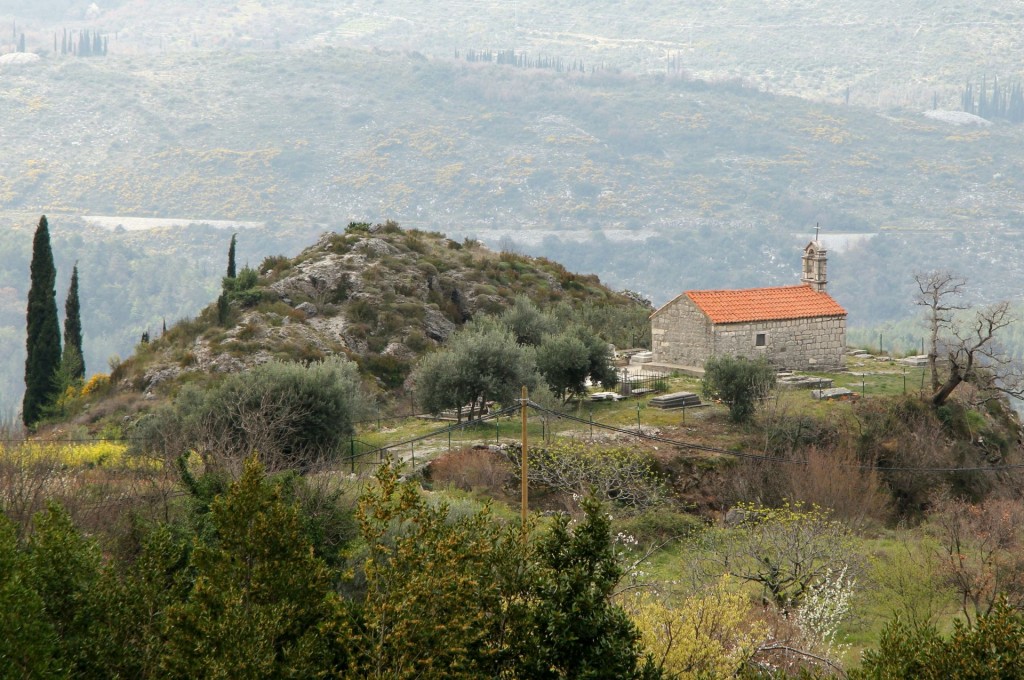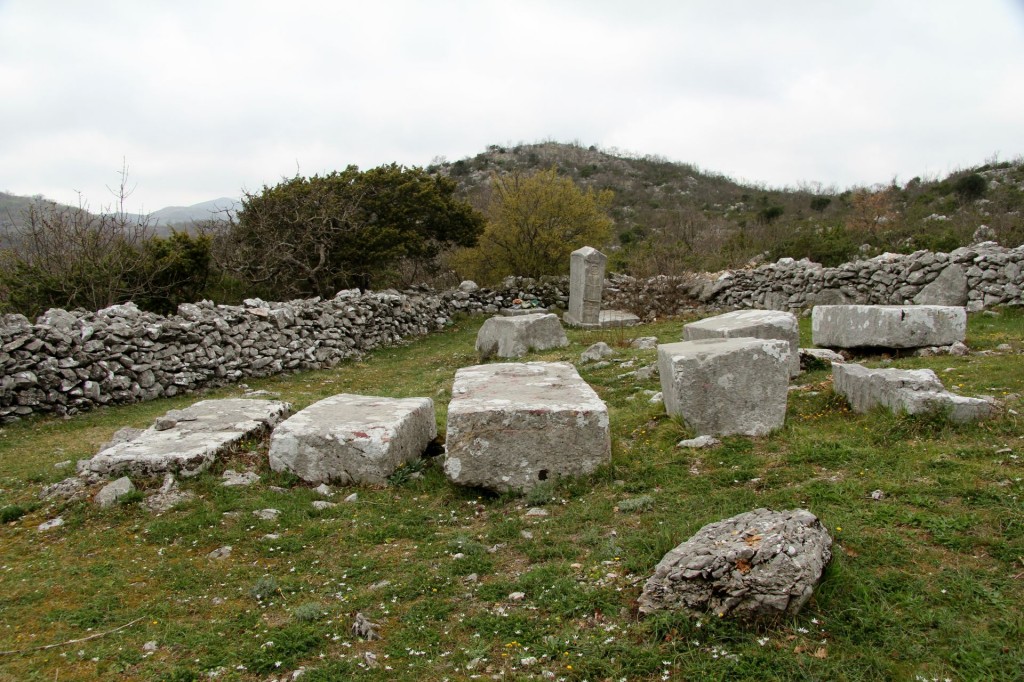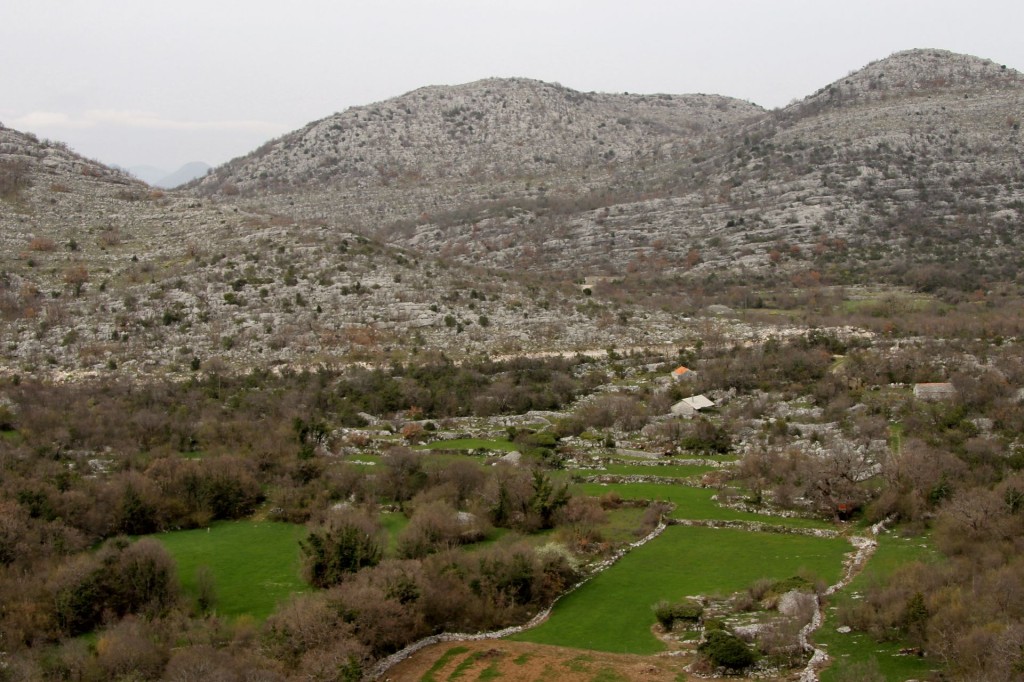 The Konavle region in Croatia stretches between Cavtat and the border with Montenegro. Many people have already passed through this fertile valley on their way to Dubrovnik or Čilipi Airport, but I suppose that the road through the upland of Konavle, with its picturesque stone villages on the karst slopes of Mount Snježnica (1234 m high), is still unknown to most tourists and travel fans.
The Konavle region in Croatia stretches between Cavtat and the border with Montenegro. Many people have already passed through this fertile valley on their way to Dubrovnik or Čilipi Airport, but I suppose that the road through the upland of Konavle, with its picturesque stone villages on the karst slopes of Mount Snježnica (1234 m high), is still unknown to most tourists and travel fans.
The reason why we decided to explore the upper section of Konavle was the fact that the villages in this area are hiding many “stećci” or medieval tombstones, as this region borders with Herzegovina, the homeland of numerous medieval necropolises.
Immediately after passing the border we turned right, in the direction of Vodovađa and Dubravka.
 The narrow road took us uphill and we enjoyed the magnificent view of the valley with its typical slender cypress trees and the karst mountains above us. After a twenty minutes’ drive we were surprised to discover a medieval fortress on the top of a rock: Sokol Grad. Of course, we were curious to visit the tower, which was obviously renovated and reconstructed. We paid an entrance fee of 40 kuna (€5) and climbed the steep stone stairs to a small museum with very interesting exhibits. Medieval music was heard in the rooms with showcases, and on the outer walls, equipped with a series of old canons, visitors could hear the sounds of war-making. The view of the surroundings was breath-taking.
The narrow road took us uphill and we enjoyed the magnificent view of the valley with its typical slender cypress trees and the karst mountains above us. After a twenty minutes’ drive we were surprised to discover a medieval fortress on the top of a rock: Sokol Grad. Of course, we were curious to visit the tower, which was obviously renovated and reconstructed. We paid an entrance fee of 40 kuna (€5) and climbed the steep stone stairs to a small museum with very interesting exhibits. Medieval music was heard in the rooms with showcases, and on the outer walls, equipped with a series of old canons, visitors could hear the sounds of war-making. The view of the surroundings was breath-taking.
Sokol Tower was built on the site of an Illyrian and Roman fortification. In the late 14th century, the fortress was ceded to the Dubrovnik Republic.
 There was a cistern, a storehouse for wine and food, a building for the soldiers, but also a separate house for the accommodation of women and children from the nearby villages in case of war danger. After the big earthquake in 1667 the fortress was abandoned. The ruins were purchased by the Association of Friends of Dubrovnik Antiquities in 1966 and the fortress was completely renovated and reconstructed. Last year it was officially opened for visitors.
There was a cistern, a storehouse for wine and food, a building for the soldiers, but also a separate house for the accommodation of women and children from the nearby villages in case of war danger. After the big earthquake in 1667 the fortress was abandoned. The ruins were purchased by the Association of Friends of Dubrovnik Antiquities in 1966 and the fortress was completely renovated and reconstructed. Last year it was officially opened for visitors.
Although I really admired the excellent setting of this cultural monument, I could not help feeling sorry for monuments of this type in Montenegro, which are often abandoned, neglected and full of litter. How beautiful it would be to reconstruct the fortress of Žabljak Crnojevića, Haj-Nehaj, Kosmač, …..
 We continued our trip through the upland of Konavle in search of “stećci”. And we really found them at several locations, mostly as an integral part of small village cemeteries: first of all around the church under Sokol Tower, and further in Gabrili, behind the church of Pridvorje, near Drvenik … Very picturesque tombstones can be found near Uskoplje, at the graveyard of the church on the left side of the road (coordinates N 42°34′ 29″; E 18°16’59”). They show women in a circular dance, a horseman and various other scenes.
We continued our trip through the upland of Konavle in search of “stećci”. And we really found them at several locations, mostly as an integral part of small village cemeteries: first of all around the church under Sokol Tower, and further in Gabrili, behind the church of Pridvorje, near Drvenik … Very picturesque tombstones can be found near Uskoplje, at the graveyard of the church on the left side of the road (coordinates N 42°34′ 29″; E 18°16’59”). They show women in a circular dance, a horseman and various other scenes.
But the most important goal of our trip was Brotnice, a small village on the border with Herzegovina, the location of a necropolis with a very famous medieval tombstone that is often mentioned in literature. So we passed Uskoplje and turned right at the signpost to Duba Konavoska (13 km), following the narrow asphalt road through the arid karst landscape. After a few kilometers we turned right in the direction of Brotnice and after having passed this hamlet, the road was getting worse.
 An inhabitant of the village explained us that we had to park 500 m farther beside the road, at a big blue fire plug on a junction with two trails. We did not take the sandy path uphill on the right side, but we continued on the left trail, passing a small home chapel. After 20 minutes we reached a small church and behind it, on the graveyard, was the necropolis with around 10-12 tombstones, most of them simple stone slabs. The biggest one, a stećak with a pointed top from the 15th century, showed vivid primitive carvings and glagolitic lettering in the ancient language of Bosnia. The frontal side of the monolithic monument was decorated with a deity bearing large rams’ horns, rosette, and a crescent. We also saw a hunting scene, deer, dancing girls, an eagle with its pray, a dog with a hare in his mouth, a horseman …. It was unbelievable to see that such a marvelous tombstone, a real work of art, is hidden here, without any signposts, in the middle of nowhere.
An inhabitant of the village explained us that we had to park 500 m farther beside the road, at a big blue fire plug on a junction with two trails. We did not take the sandy path uphill on the right side, but we continued on the left trail, passing a small home chapel. After 20 minutes we reached a small church and behind it, on the graveyard, was the necropolis with around 10-12 tombstones, most of them simple stone slabs. The biggest one, a stećak with a pointed top from the 15th century, showed vivid primitive carvings and glagolitic lettering in the ancient language of Bosnia. The frontal side of the monolithic monument was decorated with a deity bearing large rams’ horns, rosette, and a crescent. We also saw a hunting scene, deer, dancing girls, an eagle with its pray, a dog with a hare in his mouth, a horseman …. It was unbelievable to see that such a marvelous tombstone, a real work of art, is hidden here, without any signposts, in the middle of nowhere.
Deeply impressed by the beauty of this mysterious tombstone, we took the same way back and reached Cavtat, from where we took the highway returning to Montenegro.

